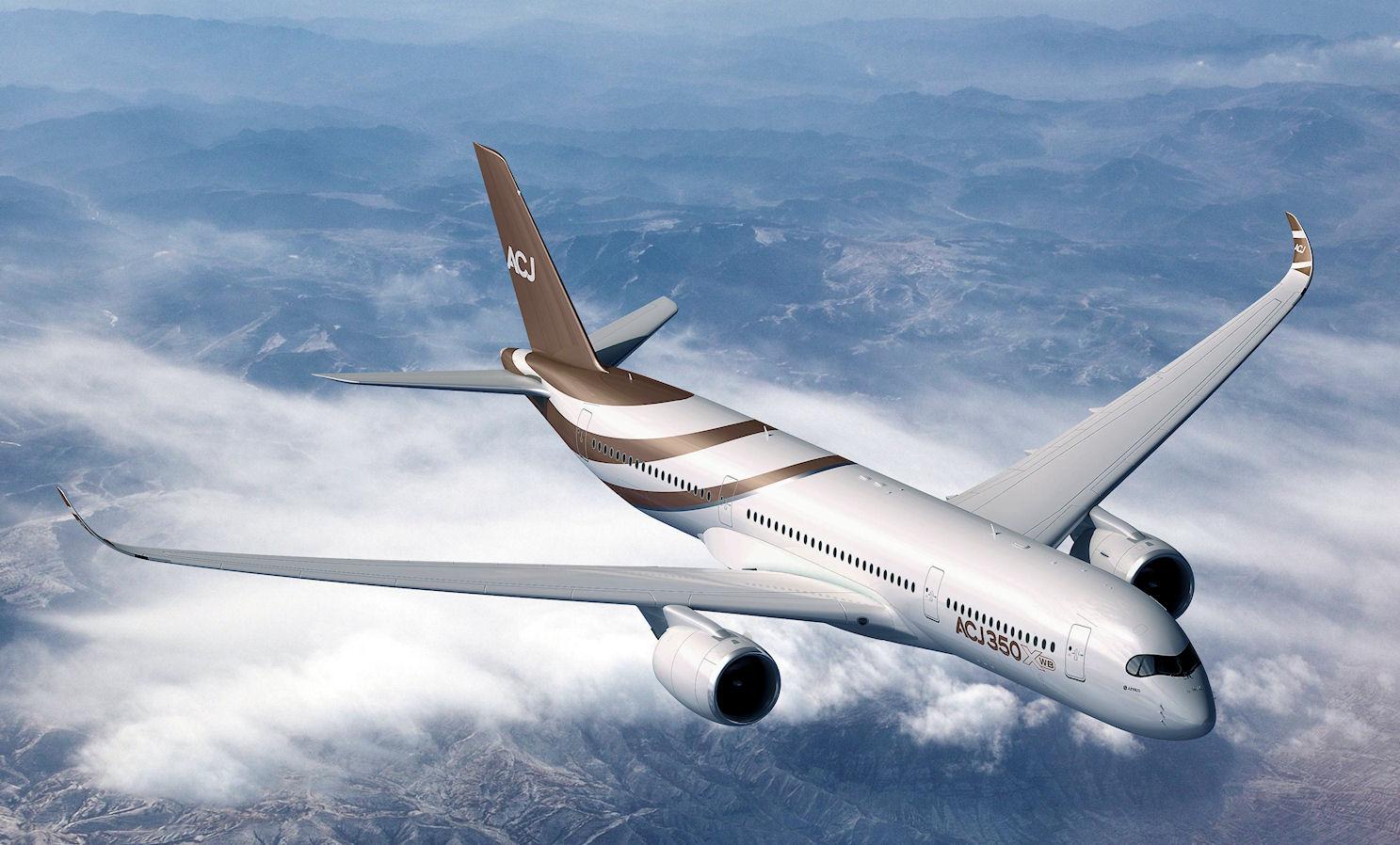New Business Aircraft: Large Jets And Supersonics
October 15, 2018
Airbus ACJ319/320neo
The “new engine option” (neo), now in service with airlines, was officially extended to business operators in May 2015. The first corporate version, an ACJ320 with the CFM International Leap 1A as its powerplant, was completed in August and will be handed over to Acropolis Aviation of the UK imminently. In addition to six ACJ320neo aircraft, three shorter ACJ319neos are on order, the latter coming on line in the second quarter of next year.

Airbus ACJ330neo
Launched at EBACE in May 2017, the private version of the second-generation Airbus A330 airliner offers 9,400-nm range with 25 passengers, Rolls-Royce Trent 7000 engines and Sharklet wingtips. Yours for about $300 million, with the latest style Harmony cabin thrown in.

Airbus ACJ350
From a peak of eight orders, just one of these airliners (a -900; list price $317 million) remains on the books for an undisclosed business operator, intended delivery date unknown. Range with 25 passengers is 10,800 nm.

Boeing BBJ MAX
Deliveries of the 737 MAX for BBJ conversion began on April 16 when an intermediate size -8 for F & L Aviation III LLC, Las Vegas, departed Boeing Field. First stops were Aloft AeroArchitects for auxiliary fuel tank installation, then Comlux, for the interior, with finished cost being estimated in the region of $96.3 million.
Boeing Business Jets has had this equivalent to the BBJ2 on offer since the first BBJ MAX 8 was ordered in March 2014. An initial contract for a $105.3 million, stretched BBJ MAX 9 (replacing the BBJ3) was announced in June 2015, although it was received some time before. The first “short” BBJ MAX 7 order was announced in December 2016 and the Alberto Pinto cabin model was unveiled at Geneva in May 2017. Although it will complete replacement of the baseline BBJ in 2022, the MAX 7 differs from the old 737-700 in having a modest (6 ft. 4 in.) fuselage stretch and $88.7 million average price. MAX 7 range with eight passengers is 7,000 nm, which is greater than the MAX 8’s 6,540 and MAX 9’s 6,515.
In total, Boeing Commercial Airplanes records 17 customers placing orders for 20 business jet MAXs of various lengths—which might be slightly different than BBJ’s figures because of internal accounting disparities.

COMAC ARJ21 Xiangfeng
An executive version of the 90-seat ARJ21-700 airliner has gathered four commitments from three Chinese companies since 2014. Fokker Services of the Netherlands was appointed to design a suitable interior for installation by Shanghai Aircraft Manufacturing, but HAECO Private Jet Solutions of Hong Kong was reported in April 2017 to have signed a cooperation agreement with COMAC to provide both cabin industrial design services and concept drawings for the corporate ARJ21. Availability is in great doubt, with airliner production since certification (December 2015) running at scarcely more than two per year.

Aerion AS2
Having secured the engineering and marketing support of Airbus, Aerion is currently consulting with Lockheed Martin on a feasibility study that could resolve the question of where the tri-jet is to be built. In parallel, the choice of engine is being debated in a joint study with General Electric, hope being that the AS2 can be fully launched in 2020. Several refundable commitments have been received, but Aerion will talk only of 20 from Flexjet.
Predicted range is 4,200 nm at Mach 1.4 or 5,400 nm at Mach 0.95. Aerion’s strategy is for high-subsonic cruise over land, the top speed reserved for unregulated water crossings, although “boomless” Mach 1.1 flight is possible. Seating is for between eight and 12 in a cabin 30 ft. long, with 6 ft. 2 in. headroom.

Boom Airliner
Virgin Group and Japan Air Lines are among those committed to the $200 million, 45/55-seat, Mach 2.2 airliner, the former company additionally a possibility for building up to 60 per year in a new plant in California. The one-third-scale, proof-of-concept XB-1 “Baby Boom” is now two years late but should fly next year, leaving the Airliner enough time for 2025 service entry.
Boom also adopts the over-water supersonic operating model, with the added idiosyncrasy that the published range of 9,000 nm includes an ultrabrief refueling stop, during which passengers remain seated. Accommodation is all business class, but customers will pay no more than the subsonic fare, says Boom.

Spike S-512
A self-funding design incorporating a pair of unspecified 20,000-lb.-thrust engines, the S-512 will cruise at Mach 1.6 and cover 6,200 nm supersonic over water. Passengers total between 12 and 18 in a windowless cabin, the “Multiplex Digital” walls of which are covered by thin display screens projecting entertainment. Spike is predicting first flight in 2021 and market availability in 2023, the first step toward which was the maiden flight in September 2017 of the SX-1.2 scale model. Of the manned testbed due to fly this year, there has been no recent news.
In the world of airliner-derived business jets, Airbus and Boeing are, as ever, neck-and-neck in bringing new product to market, although their larger brethren have less customer appeal. That said, it will be interesting to see if Airbus has an inclination with its newly acquired A220 to revive Bombardier’s plans for an executive C Series.
Nothing has been heard from the HyperMach HyperStar in recent months. The three remaining designs have all suffered program slippage, although Aerion appears the most likely to succeed.